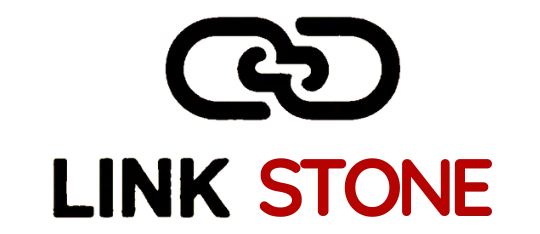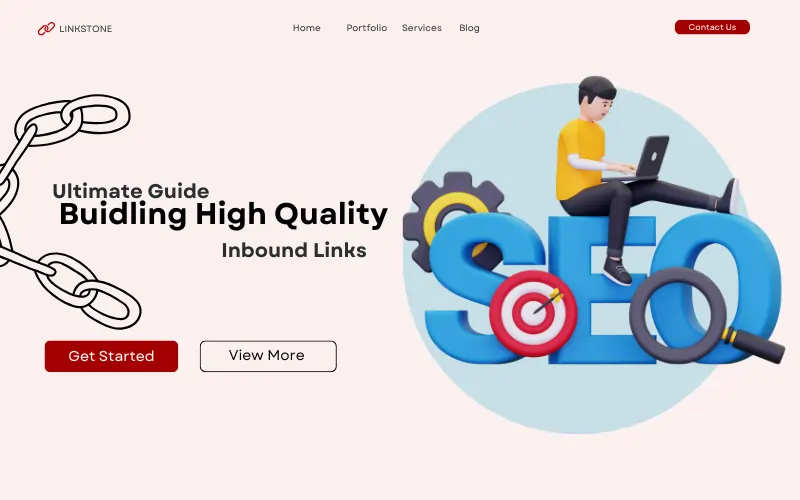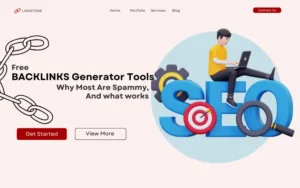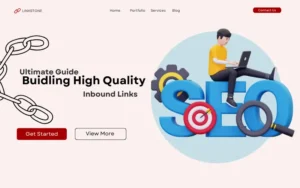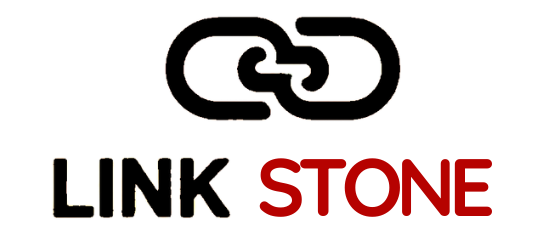Inbound links or backlinks remain one of the most powerful ranking factors in SEO. They are essentially votes of confidence from other websites. Google and other search engines use them to determine the credibility, relevance, and authority of your content. But not all links are equal. Some can dramatically improve your rankings, while others can harm your site.
In this guide, we’ll cover everything you need to know about inbound linksfrom basic concepts to advanced strategies you can grow your website traffic, improve SEO, and build sustainable authority online.
What Are Inbound Links and Why They Matter
Inbound links are links from other websites that point to your website. They are important because:
- Google treats them as endorsements. The more high-quality backlinks you have, the more likely Google is to see your site as authoritative.
- They drive referral traffic. People click on links from other sites, bringing engaged visitors to your pages.
- They improve indexing. Search engine bots discover new pages faster when they are linked from other websites.
Types of Inbound Links:
- Natural Editorial Links: Links given voluntarily by other websites because they value your content.
- Guest Post Links: Links you earn by writing content on other websites in exchange for backlinks.
- Manual Outreach Links: Links you acquire by reaching out to relevant websites and offering your content.
- Self-Created Links: Links from directories, forums, or user-generated content (use with caution).
Benefits of High-Quality Backlinks for SEO
High-quality backlinks bring both direct and indirect benefits:
- Boost Search Engine Rankings: Search engines rank pages with more authoritative backlinks higher.
- Increase Organic Traffic: People discovering your content through other websites can convert into leads.
- Build Authority and Trust: Backlinks from reputable sites enhance your credibility.
- Better Indexing and Crawlability: Search engine crawlers follow backlinks to discover new content.
Example:
If a popular tech blog links to your SEO article, Google sees your page as authoritative in SEO. Visitors from the tech blog may also become subscribers or clients, creating dual benefits.
Common Mistakes to Avoid in Link Building
Even with the best intentions, many websites fail at link building because of common mistakes:
- Buying Low-Quality Links: Avoid link farms or automated tools that create hundreds of low-value links. Google can penalise your website.
- Ignoring Relevance: A link from a cooking blog to an SEO article may not be very helpful. Focus on relevant niches.
- Over-Optimised Anchor Text: Repeating the same keyword in anchor text can appear manipulative. Vary your anchor text naturally.
- Neglecting User Experience: Links should provide value to users, not just SEO benefits.
Proven Strategies to Get Quality Inbound Links
1. Guest Posting on Authority Sites
Guest posting is one of the safest ways to earn backlinks. Here’s how to do it right:
- Find high-DA sites in your niche. Tools like Ahrefs, SEMrush, or Moz can help.
- Create valuable content tailored to the audience of the site.
- Include contextual backlinks naturally in your content.
Tip: Focus on quality over quantity. One link from a high-authority site is better than 10 links from low-quality blogs.
2. Creating Shareable Content
Content that provides real value naturally attracts links. Examples include:
- Ultimate guides and tutorials
- Infographics and charts
- Original research and case studies
Pro Tip: Use a content promotion strategy. Share your content with relevant bloggers, industry forums, and social media groups.
3. Broken Link Building
Broken link building is an effective, ethical strategy:
- Find websites with broken links in your niche.
- Contact the webmaster and offer your content as a replacement.
Example:
If a marketing blog has a broken link to an old SEO guide, you can suggest your updated guide. This helps them fix the link and earns you a high-quality backlink.
4. Leveraging Social Media for Links
Social media can indirectly boost backlinks:
- Share your content on LinkedIn, Twitter, Facebook, and niche-specific platforms.
- Encourage users to share your content.
- Connect with influencers who can naturally link to your content in their blogs.
Note: Social links are mostly no-follow, but they improve visibility and lead to organic backlinks.
5. Resource Page Link Building
Many websites maintain resource pages for their niche. Reach out and suggest adding your content as a valuable resource. These links are often high-authority and highly relevant.
Tracking and Measuring Your Inbound Links
Once you start building links, tracking them is critical. Tools to use:
- Ahrefs: Monitor backlinks, referring domains, and anchor texts.
- SEMRush: Analyse competitors and discover link opportunities.
- Google Search Console: Track top-linked pages and referring sites.
- Google Analytics: Monitor referral traffic and conversions from backlinks.
Metrics to Watch:
- Number of backlinks
- Domain authority of linking sites
- Referral traffic
- Anchor text diversity
Tools to Help You Build and Monitor Backlinks
Here are some essential tools for link building:
- Ahrefs: Backlink research and competitor analysis
- Moz Link Explorer: Link opportunities and site authority
- BuzzSumo: Identify trending content and link prospects
- Hunter.io: Find email addresses for outreach campaigns
- Google Alerts: Monitor mentions of your brand for potential link opportunities
Best Practices for Long-Term Link Building Success
- Focus on high-quality, relevant links rather than mass link building.
- Diversify your anchor text naturally.
- Build relationships with bloggers and websites in your niche.
- Update your content regularly to maintain link value.
- Avoid shady tactics like automated link generation, paid spammy links, or link exchanges.
Case Study: How a Small Blog Increased Traffic by 200%
A small marketing blog focused on high-quality inbound links by:
- Publishing 10 detailed guides on SEO
- Guest posting on 5 authoritative websites
- Reaching out to resource pages for link placements
Result: Organic traffic increased by 200%, and domain authority rose from 22 to 35 in six months. This shows the power of consistent, quality link building.
Frequently Asked Questions (FAQs)
Q1: How many backlinks do I need to rank?
ANS: The number of backlinks required depends on your industry, niche competitiveness, and the quality of existing backlinks on your site. For highly competitive niches like finance or health, you may need dozens of high-authority backlinks to outrank top competitors. For smaller niches, a few strategic backlinks can be enough.
Q2: Are all backlinks equally valuable?
ANS: No. Backlinks differ in SEO value based on factors like domain authority, relevance, trustworthiness, and placement on the page. A link from a niche-relevant, high-authority website (like an industry blog or government/edu site) is far more valuable than a generic directory or forum link. Additionally, contextual links embedded naturally within relevant content carry more weight than footer or sidebar links.
Q3: Can social media links help my SEO?
ANS: Yes, but indirectly. Most social media links are no-follow, meaning they don’t pass direct SEO link equity. However, sharing your content on platforms like LinkedIn, Twitter, Facebook, and niche-specific communities can increase visibility. This often leads to organic backlinks from other websites, bloggers, or journalists who discover your content through social sharing.
Q4: How often should I check my backlinks?
ANS: Backlink monitoring should be done at least once a month, especially if you are actively building links. Tools like Ahrefs, SEMrush, Moz, or Google Search Console allow you to track new backlinks, lost backlinks, anchor text distribution, and the authority of linking domains. Regular monitoring helps you identify toxic or spammy links, recover lost links, and evaluate the success of your link-building campaigns.
Q5: Is anchor text important?
ANS: Yes, anchor text is very important for SEO because it tells search engines what the linked page is about. However, over-optimisation using the same keyword repeatedly can trigger Google penalties. Instead, use a natural mix of anchor types:
- Branded anchors (your brand name)
- Generic anchors (e.g., “click here,” “learn more”)
- Long-tail keyword anchors (descriptive phrases)
A diverse and natural anchor text profile signals to search engines that your links are organic, credible, and valuable.
Q6: Can internal linking improve inbound link value?
ANS: Absolutely. Internal linking helps distribute link equity from high-authority inbound links to other pages on your site. By linking related pages, you guide search engines to important content, improve crawlability, and enhance user experience. For example, a high-quality backlink to your blog post can pass authority to product pages or service pages via internal links, boosting their rankings. Effective internal linking also encourages visitors to stay longer on your site, reducing bounce rates and improving overall SEO performance.
Conclusion
Inbound links are the backbone of effective SEO, acting as endorsements that signal authority, relevance, and trustworthiness to search engines. By focusing on high-quality links from niche-relevant, authoritative sources, you not only improve your rankings but also drive qualified, referral traffic to your website.
Sustainable link-building practices such as guest posting, broken link building, and creating shareable content ensure that your SEO growth is long-term and risk-free. Remember, chasing quantity over quality can harm your site, while consistent, strategic efforts compound over time, strengthening your website’s overall authority and online visibility.
Moreover, combining inbound links with internal linking, on-page optimisation, and regular content updates maximises the SEO value of each backlink. Over time, this holistic approach establishes your website as a trusted resource in your niche, attracting both search engines and real users.
In short, focus on quality, relevance, and consistency, and your inbound links will not only boost rankings but also enhance your brand credibility, audience reach, and long-term growth.
Meta Title:
Free Pro SEO Tips: How to Build High-Quality Inbound Links
Meta Description:
Learn expert strategies for building inbound links that boost your website’s SEO. Step-by-step tips for organic traffic, link building, and high-quality backlinks.
